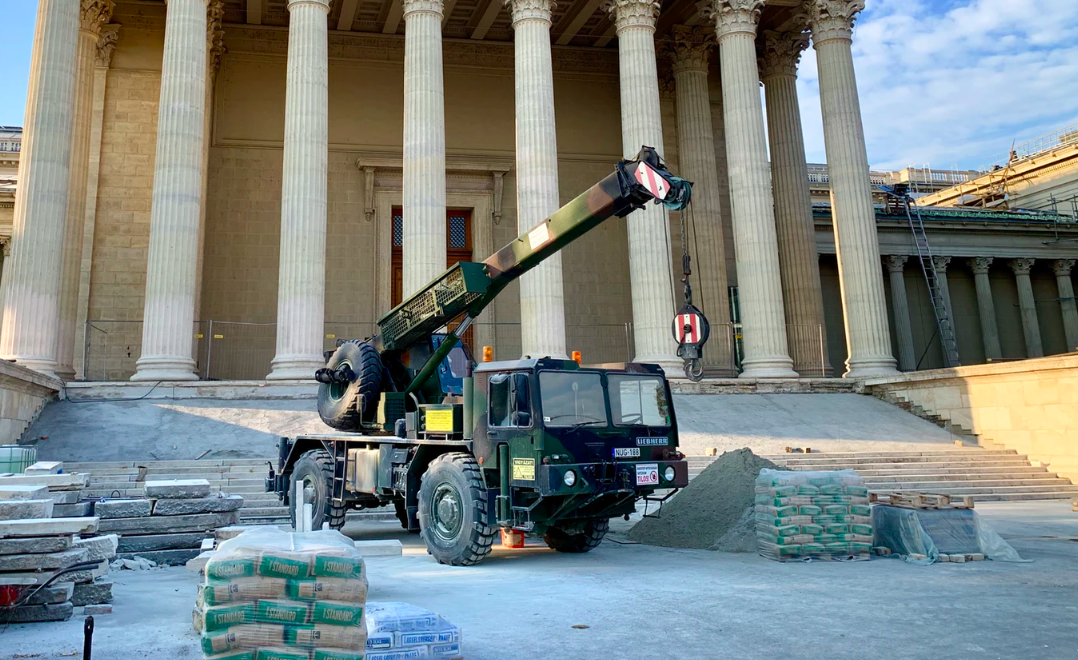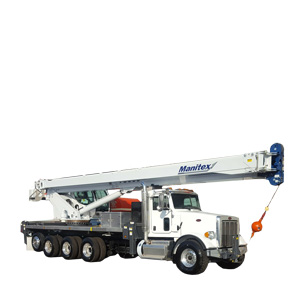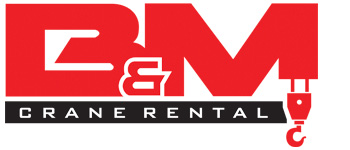If you’ve spent any amount of time browsing cranes, chances are you’ve come across a boom truck. From the first impression, it may just look like a typical Class-8 truck with a crane strapped to the flatbed. In many ways, that’s really what a boom truck is. This unique configuration might lead you to ask: What is a boom truck used for?
What you might not know is that a boom truck is one of the most versatile and useful types of cranes. They are used across industries and are a regular on just about any major construction site.

To understand why a boom truck is so useful in so many situations, we have to understand what exactly it is.
What is a boom truck?
Let’s start off with the anatomy of a boom truck. A boom truck is a type of mobile crane that consists of three essential parts:
- A hydraulic crane: The most common type of crane used on a boom truck is a rotating telescopic boom. A boom may also have a jib for even greater horizontal control and reach.
- A flatbed: The actual crane (i.e., the operator cabin and telescopic boom) are positioned on the flatbed behind the truck cabin. However, this area can also be used to store or transport items.
- A cabin: Without the crane, a boom truck would look just like a hauling truck with a cabin and a long flatbed. In fixed cabin boom trucks, the boom controls are also located in the driver’s cabin. In swing boom trucks, a separate operator cabin sits on the flatbed, rotating in tandem with the boom.
Other features
Boom trucks can also vary greatly in size, capacity, and reach. They can weigh anywhere from 17 to 50 tons. A typical boom has a length of about 70 feet or more and a jib can add around another 40 feet.
Boom trucks can lift anywhere from 10 to 60 tons. A boom can lift more the less it’s extended and vice versa. Each boom truck should come with a chart that illustrates its capacity at different levels of extension. The most common capacity is around 16 to 20 tons.
A boom can be fitted with different hoists for different eventualities and lifting needs. For example, a personnel hoist consists of a basket so workers or inspectors can be lifted up safely.
Because it’s basically a truck, a boom crane can be driven on normal roads. This means they don’t need to be transported like some other types of cranes, for example, a crawler crane.
Because they aren’t as highly specialized, boom trucks are one of the most affordable types of cranes. They are also readily available.
This makes boom trucks one of the most versatile types of cranes. No matter what type of construction site it is, there will almost certainly be a boom truck.
What are boom trucks used for?
While these are the most common uses for a boom truck, they are by no means its only application. These versatile cranes are like the Swiss utility knives of the crane industry and you can find a use for them just about anywhere.

Municipal works
One of the most common uses for boom trucks is in municipal service. Because boom trucks can be driven around the city or a town, it can reach just about any location. With a personnel hoist, it’s almost uniquely suited for maintenance work on buildings, street lamps, transmission towers, etc.
Transporting goods
Depending on the size, boom trucks usually have a large flatbed with ample room to spare. Boom trucks are often used to transport goods to a site and then to lift them with the crane. This eliminates the need to hire both a crane and a hauler.
This makes it ideal to transport and install exterior air conditioning units. However, it’s ideal for almost any type of appliance or even furniture. Boom trucks can be useful for anything from moving house to installing an AC unit on a skyscraper.
A personnel platform
With a personnel hoist attached to the boom, a boom truck is a superb option for elevated repairs or maintenance. Since this doesn’t require huge lifting capacities, smaller and more maneuverable boom trucks can be used.
On construction sites, it can be used by anyone from repairmen to inspectors. However, boom trucks can even be used by arborists to inspect trees or pick fruits.

Is a boom truck the right choice for your worksite?
If you look hard enough, you will find a job fit for a boom truck on just about any worksite. However, there are many types of cranes and you should read up to ensure you’re choosing the right crane for your job.
In particular, make sure to think about:
- Whether the crane can reach your site
- How much weight you need to lift
- How long you need the boom and/or jib to be
- The surface conditions of the site
- Your budget
The only circumstances in which a boom truck might not be appropriate is on extremely rough terrain or if you need to lift hundreds of tons at a time. For all other jobs, it can be the most cost-effective and useful option.
So, now that you know what a boom truck is used for, is it a good fit for your next project?

